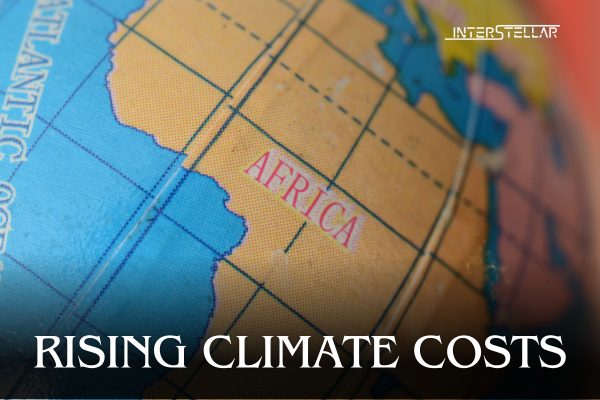Africa’s Growing Climate Burden and Rising Adaptation Costs
Africa faces rising climate challenges, with disproportionately high costs for essential climate adaptation, according to a new report from the World Meteorological Organization (WMO).
Economic Impact of Climate Change
On average, African countries are losing 2–5 percent of their Gross Domestic Product (GDP) annually due to climate-related challenges. Many nations are diverting up to 9 percent of their budgets to address climate extremes. In sub-Saharan Africa, the cost of climate adaptation is projected to range between US$ 30-50 billion annually over the next decade, accounting for 2-3 percent of the region’s GDP, as highlighted in the WMO’s State of the Climate in Africa 2023 report.
If adequate response measures are not implemented, it is estimated that by 2030, up to 118 million extremely poor people, living on less than US$ 1.90 per day, will face exposure to droughts, floods, and extreme heat in Africa. These conditions will place additional burdens on poverty alleviation efforts and significantly hinder economic growth.
Urgent Need for Climate Investment
The report emphasises the urgent need for African countries to increase investment in National Meteorological and Hydrological Services. Accelerating the implementation of the Early Warnings For All initiative is also crucial to saving lives and livelihoods. These investments are vital for mitigating risks, building adaptive capacity, boosting resilience at all levels, and guiding sustainable development strategies.
Focusing on climate change indicators and impacts in 2023—the world’s hottest year on record—the report supplements the WMO’s State of the Global Climate report. It is part of a series of regional reports that provide essential data to support informed decision-making and action.
Escalating Extreme Weather Events
Over the past 60 years, Africa has experienced a warming trend that is faster than the global average. In 2023, the continent faced deadly heatwaves, heavy rains, floods, tropical cyclones, and prolonged droughts. WMO Secretary-General Celeste Saulo noted that countries in the Horn of Africa, southern, and North-West Africa continued to suffer exceptional multi-year droughts, while others faced extreme precipitation events leading to significant casualties and economic damage.
This pattern of extreme weather persisted into 2024, with southern Africa gripped by severe drought and exceptional seasonal rainfall causing widespread devastation in East African countries, particularly in Sudan and South Sudan. These events have exacerbated an already dire humanitarian crisis.
Africa at a Critical Juncture
The WMO, in collaboration with the African Union Commission and other partners, will release the report at the 12th Climate Change for Development in Africa (CCDA) Conference in Abidjan, Côte d’Ivoire, on 2 September 2024.
“The State of Climate in Africa 2023 Report highlights the urgent need for investing in meteorological services and early warning systems to help adapt to climate change and build resilience in Africa,” said H.E. Ambassador Josefa Leonel Correia Sacko, Commissioner for Agriculture, Rural Development, Blue Economy, and Sustainable Environment at the African Union Commission.
As climate change continues to intensify globally, Africa faces rising climate challenges that severely impact agriculture, food security, education, energy, infrastructure, and overall socio-economic development. The continent stands at a critical juncture, where urgent action is needed to address these challenges and build a sustainable future.
This article is based on a report by the World Meteorological Organisation.





